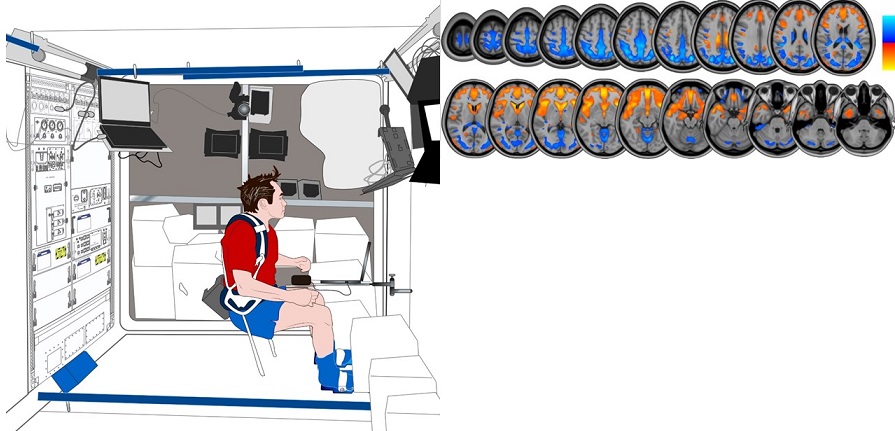
Originally shared by annarita ruberto
What Happens When Your Brain Can’t Tell Which Way is Up?
In space, there is no “up” or “down.” That can mess with the human brain and affect the way people move and think in space. An investigation on the International Space Station seeks to understand how the brain changes in space and ways to deal with those changes.
Previous research and first-hand reports suggest that humans have a harder time controlling physical movement and completing mental tasks in microgravity. Astronauts have experienced problems with balance and perceptual illusions – feeling as if, for example, they are switching back and forth between right-side-up and upside down.
The Spaceflight Effects on Neurocognitive Performance: Extent, Longevity, and Neural Bases (NeuroMapping) study is examining changes in both brain structure and function and determining how long it takes to recover after returning from space.
Researchers are using both behavioral assessments and brain imaging. Astronauts complete timed obstacle courses and tests of their spatial memory, or the ability to mentally picture and manipulate a three-dimensional shape, before and after spaceflight. The spatial memory test also is performed aboard the station, along with sensory motor adaptation tests and computerized exercises requiring them to move and think simultaneously. Astronauts are tested shortly after arriving aboard the station, mid-way through and near the end of a six-month flight.
Structural and functional magnetic resonance imaging (MRI) scans of the brain are done pre-flight and post-flight.
► Read the whole article for knowing more>>
http://www.nasa.gov/mission_pages/station/research/news/neuromapping
► Left image explanation: This illustration shows the configuration for conducting neurocognitive assessments for the Neuromapping study aboard the International Space Station.
Credits: NASA
► Right image explanation: These slides show changes in volume in certain areas of the brain that occur with long-duration, head-down tilt bed rest. The Neuromapping Flight Study examines whether similar changes occur with spaceflight.
Credits: University of Michigan
#NASA #neuroscience #brain #NeuroMapping #space #InternationalSpaceStation

